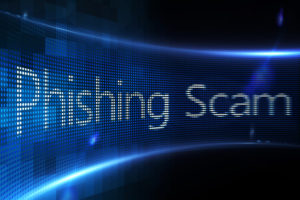Cold calling is STILL the number one way to get your exact message to the right audience.
With so many tools available to connect you with potential customers, you might think of the traditional cold call as a relic from the past—but the traditional cold call can be useful for growing your business if you approach it the right way. Knowing how to properly make a cold call can save you from countless hang ups and awkward encounters, and it’s a great way to create relationships with businesses that know nothing about you or your product. Cold calls give you the opportunity to share exactly what a new potential customer needs to hear.
Think of cold calling as the best targeted marketing possible. It’s the guaranteed way to for your prospects to meet you—and you might be exactly what they are looking for.
Have a Plan
The most important thing is to have a plan in place before you make the call. Define success ahead of time.
- Do you want an email address to follow up with?
- Do you want a meeting with the CEO to pitch your product?
- Are they another contact to add to your list to build your network?
- Are they a potential customer down the line or right now?
Be very clear with yourself as to why you are making the call. Why does this company care about staying on the line to make that happen? What are you bringing to this company that makes you stand out?
Most manufacturers can’t manage more than a couple new customers at a time, so it’s critical to vet potential customers. Who is your best current customer? What products are most profitable? Don’t try to reinvent the wheel when you can pursue more of what already works.
Who to Call
Any calling program starts with knowing who you are contacting. Cold calling isn’t just randomly dialing numbers and hoping for a good conversation. It requires you to research not just who to call, but also why they would want to speak with you. Know who you are calling, who you want to talk to, and why you are the ideal solution for them right now.
Keep It Simple
Cold calling isn’t a long conversation. Think of it as an elevator pitch or networking opportunity. I’m sure you’ve been in phone conversations that dragged on and you just couldn’t wait to get off the phone! Avoid being that call. Come to the conversation prepared, with a point in mind.
Approach it the same way you would if you were meeting face to face. You aren’t looking for all the information possible about everyone in the company, just a contact point to establish a connection and hopefully lay the groundwork for the next conversation. You want to keep it short, recognize their time on the call, and go for something tangible (like an email or phone number) that you can follow up with.
Have your talking points ready, but make it quick. Remember, this isn’t a catch up with a childhood friend. It’s just a brief call to get your foot in the door.
Clear Message
Remember: every call you make is to a new person, even if you have said your spiel a million times that day. The person picking up the phone doesn’t know you at all. Begin each call by taking a moment before to create a tone is positive. It’s so easy for someone to hear a negative tone, when you sound bored or drained. Avoid this by thinking about something positive before dialing the phone. It may sound a little comic, but it does work!
You are an expert in your industry. You just need is to convince the person on the phone of that fact. Share your story and passion! Showcase what working with you would look like, with great customer service or personal responses. Focus on whatever you bring to the table that makes you the ideal company and product.
After the Call
After the call, take a moment and recap. It’s important to do this after every call while it’s fresh in your mind. Fill in your contact sheet with any information gained, and don’t forget to ask on the call for names to be spelled out and read back to ensure they are correct! Make some notes for yourself of what went well and what didn’t.
Have a draft follow-up email ready to send to all new cold call contacts. Personalize it, fill in some customized details if possible, and schedule it to send immediately while you are top of mind with the prospect. This shows that you are invested in developing this relationship. It also helps get rid of that pesky to do list of emails if you send it off right away.
If you do the heavy lifting right after the call when the information is still fresh in your mind, it can save you countless headaches and make cold calling less stressful and more rewarding.
Other options for follow-up include:
- Adding the contact to a monthly newsletter
- Setting up a quarterly call
- Following up on questions asked during the call
- Connecting on LinkedIn with a personalized note about the call
- Sending over a case study showcasing a point talked about previously
You’ve created the first point of contact with a cold call. Go for the next two or three to really stand out!
Chin Up
Don’t be discouraged if things aren’t going well. Some calls might get sent to voicemail (have a great voicemail script too!), while other might be a hang up. It happens! But every call you make brings you closer to that great new contact.
Cold calls are a chance to expand your customer base, and the people who want your product will stay on the line if you convince them fast enough that you are the one with the solution to their problems. It’s a chance to speak directly to your targeted market. And of course, if you absolutely despise cold calling, outsource it to someone who doesn’t. It’s still a great tool to find new potential business!
For more information on business development and marketing, sign up for our newsletter or Contact Us. We’d welcome the opportunity to discuss your specific needs.









